Postcard Fun
I went to a postcard show a short time ago and came away with a real beauty, a late 1930’s view of Wrigley Field, printed with the linen finish that was so popular back in the day. This stadium is the real deal, a survivor of over one hundred years of baseball history. If only the walls could talk, what stories they would tell!
I’m not a collector who pursues “mint” condition postcards, those with backs that are as clean as a whistle. I enjoy the address and message side, which contains the postmarks, dates, names and stories. To me, that’s where the real fun of baseball postcard collecting lies, in using that information to track down the game. As to this particular postcard, Charlotte is telling Mary about her Cubs game at Wrigley Field. So how did this game, played on Saturday, August 6, 1949, go, and who were its central players?
When I research old games the first thing I do is search the box score for names I recognize, and there were quite a few. From the Boston Braves I knew Eddie Stanky, a scrapy, hard-nosed, hustling second baseman who excelled in getting on base. He played for eleven seasons, and managed three teams after his playing days. This game was typical as Stanky came to the plate five times and got on bases in three of the appearances. His total for the day: one hit, one run batted in, one run scored and two walks. Here he is on his 1949 Bowman card:
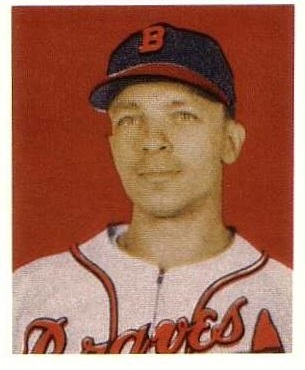
Al Dark played shortstop that day, and he was a good one. He got one hit in four plate appearances and scored one run in the game. The 1948 National League’s Rookie of the Year, Dark played for fourteen seasons and was an All Star three times. Like Stanky, Dark went on to manage and had some success, winning a National League Championship in 1962 with the San Francisco Giants and then a World Series Championship with the 1974 Oakland Athletics. That’s how I remember him, as a Manager. Here he is on one of his Manager cards from his tenure with the San Francisco Giants:
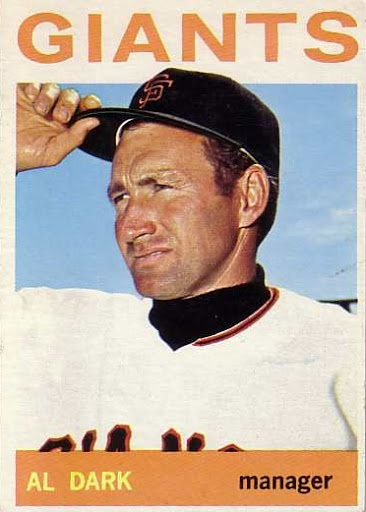
Pitching for the Braves that day was Vern Bickford. His major league career lasted seven seasons and can be divided into two distinct periods. The first four seasons were successful ones, as the right hander went a combined 57-39 from 1948 to 1951. It was during this time that Braves fans developed an ongoing saying, “Spahn and Sain and Pray for Rain.” This came about because Warren Spahn and Johnny Sain were the best hurlers the Braves had, and there was a drop off to the #3 starter, Bickford. In some ways this wasn’t fair to Bickford, because when he was on his game, Vern Bickford was very good. However, a series of injuries undermined his effectiveness, and he went a combined 9-18 during the second period, which lasted from 1952 to 1954.
On this specific outing, Bickford didn’t have his best stuff and the Cubs got to him just like citizens vote in Chicago, early and often. He lasted two innings and gave up 5 runs, all earned, on six hits. He walked three and struck out one. I want to point out, however, that this was just one bad outing, and that Vern Bickford did have his more stallar moments, including an August 11, 1950 no hitter against the Brooklyn Dodgers. Here he is looking good on his 1952 Topps card:
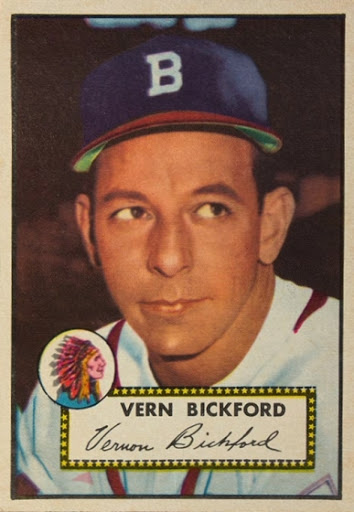
The Chicago Cubs must have enjoyed this game. They weren’t very good in 1949, finishing last among the eight National League clubs, limping their way to a 61-93 record. Gene Mauch was a utility infielder who toiled as a backup for nine major league seasons. He played second base that day, had two hits, scored two runs and knocked in another run in his four turns at the plate. He would go on to a lengthy Managerial career, where he had some good teams. Unfortunately, one of them was the 1964 Philadelphia Phillies, who were in 1st place with a six-game lead and twelve games to play that September. Then came their great collapse, which I remember very well, a ten-game losing streak, and that year’s Fall Classic featured St. Louis, and not Philadelphia, representing the National League. Ouch.
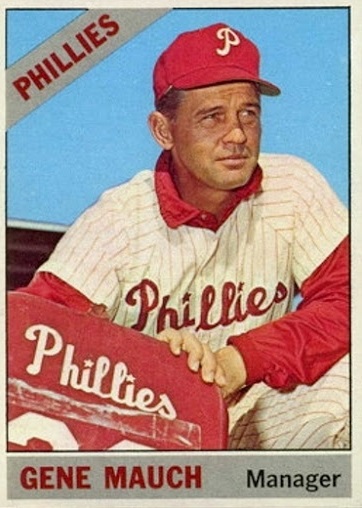
The Braves were the visiting team, and went down quietly in the first. They would continue to do so for their next seven turns at bat. The Cubs scored two in the first, three in the second, one in the third, two in the fourth, one in the fifth and one in the six for a 10 to 0 lead. Joining in this carnage for the Cubbies was Hank Sauer, a tall, muscular, power-hitting outfielder who went three for four, including a two-run homer in the fourth. He would enjoy a long career and had his best season in 1952, when he batted .270, hit 37 home runs and knocked in 121 runs en route to the National League’s Most Valuable Player Award. We see him here on his 1953 Bowman color card:
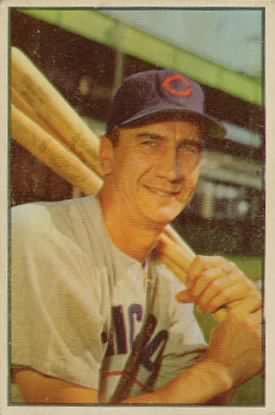
The Braves rallied for four runs in the top of the 9th, but by then, the die had been cast. The winning Cubs pitcher was a fellow named Monk Dubiel, by most accounts a journeyman pitcher who spent seven years, four of them with these Cubs, in the major leagues. He would go 6-9 that year, so this game was one of his six wins.
Charlotte was one of 15,284 fans who attended the two-hour, four-minute game. I wonder if she ever dreamed that one day her postcard would receive this treatment. Hopefully she enjoyed the rest of her time in the Windy City. Wherever you are, Charlotte, whether it be in spirit or earthly form, thank you for being a part of the team here at Grubby Glove, and today, you get the final word:
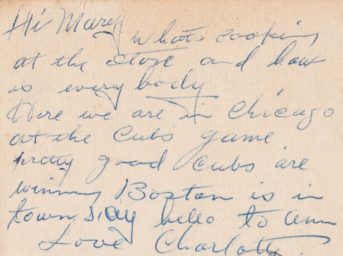
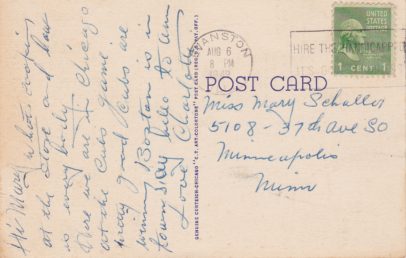


Comments